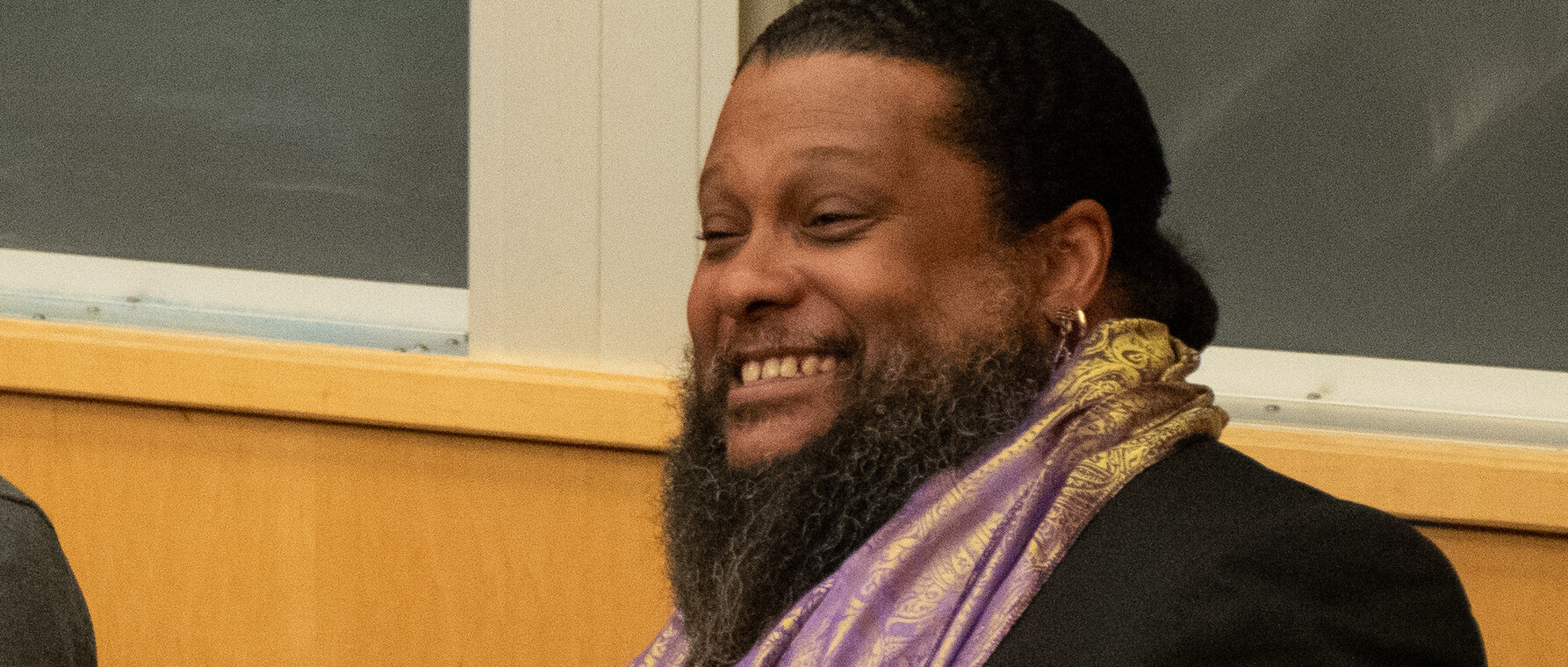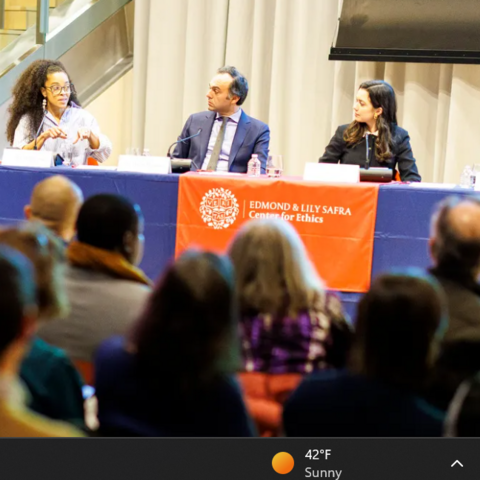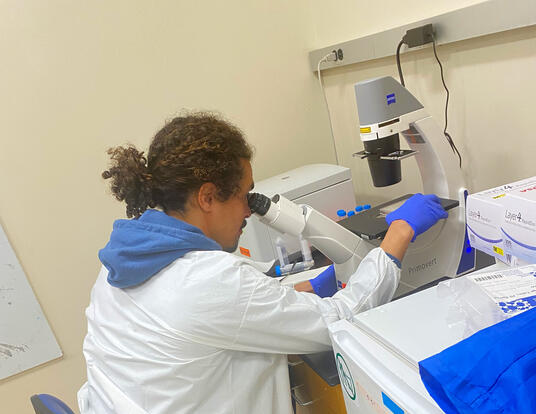Giving Science a Voice
Spragg lecturer Tyrone Hayes became an activist when he realized that science can’t speak for itself.

“He taught me what it means to be both a scientist and an activist,” said Alana Van Dervort, a PhD student in biological and biomedical sciences (BBS), as she introduced Dr. Tyrone Hayes at the Jocelyn Spragg Memorial Lecture. When Hayes was himself a graduate student, he was told not to get involved in activism, to let the science speak for itself. “A few years ago, I crossed that line,” Hayes said of the moment he became an advocate, “because the other side was not letting the science speak for itself.”
Hayes, who is a professor of integrative biology at the University of California, Berkeley, is a natural-born storyteller, weaving humor and data with anecdotes as he tells the crowd about his journey first into science and subsequently into environmental justice.
“My story will start and end with a boy who loves frogs,” said Hayes, pointing to an image of the children’s book What is a Frog? by Gene Darby, which his mother claims was one of his favorites. As an undergraduate at Harvard College, Hayes had to find a way to transform his love of frogs into a job. Research into how the environment regulates frog physiology was the answer. Hayes soon found himself in Africa as a National Geographic Explorer, where he discovered something that would intrigue any little boy who loves frogs.
Hayes discovered a frog species in which males and females look completely different, despite both being green when they are young. “While the males stay green, the females change color around puberty,” explained Hayes. He hypothesized that this had something to do with estrogen, and he tested this by giving the frogs different types of the hormone. “If you give the frog estradiol or any other estrogen, it changes color,” said Hayes. Every estrogen Hayes tested that made the frogs change color was also known to cause breast cancer. “This shows you how similar human and frog hormones are,” he said. Hayes went on to patent this frog as a screening system for compounds that could cause breast cancer, but it was another hormone that would drive him to advocacy: testosterone.
Atrazine, one of the most commonly used herbicides, had been shown to inhibit the growth of the voice box in male frogs, possibly by decreasing testosterone levels. Hayes began investigating the link between atrazine and testosterone, but instead of focusing on the voice box, he looked at the gonads. “You’ll probably see more frog gonads today than you will see in your entire career,” he laughed, a picture of an atrazine-treated frog with both testes and ovaries above him.
For some animals, such as earthworms and slugs, hermaphroditism—having both male and sex organs—is normal. This is not the case with frogs. Hayes hypothesized that atrazine was transforming testosterone into estrogen, essentially modifying the gonads. After publishing this work, he turned to what happened to these frogs when they became adults.
“So, we threw the Hayes Lab Spring Break Pool Party,” he said. Using a kiddie pool, Hayes mixed females with control males and atrazine-treated males and left them alone overnight. In the morning, his lab tracked which males interacted with the females. “The atrazine-treated males hardly ever got the females,” said Hayes. And there’s a hormonal reason why: The control males had significantly more testosterone, which means their testicular tubules are full of sperm. The testicular tubules of the atrazine-males, on the other hand, were empty. These males also behaved differently, even when they were the only male in the pool. “The atrazine-treated males don’t even try,” said Hayes. “They just sit there.”
But atrazine doesn’t only exist in the lab: It’s out in the fields and in the water. On the way to a conference in Indiana, Hayes and his lab sampled frogs along highway I-80. “That’s fuel efficiency for you,” Hayes exclaimed. Frogs found in areas where atrazine was used showed similar abnormalities to the ones Hayes had observed in the lab.
“This is when the boy who loves frogs gets introduced to environmental justice,” said Hayes as he displays a number of statistics. In California, which produces 50 percent of America’s food and uses more pesticides than any other state, 90 percent of agricultural workers are Latinx. The individuals who package atrazine are 80 percent Black and have a higher incidence of prostate cancer. Women whose well water is contaminated with atrazine have a higher incidence of breast cancer.
Understanding who is exposed to atrazine changed Hayes’ notion of whom his research serves, especially since the herbicide is currently used in the US. According to the Environmental Protection Agency, the decision to keep atrazine on the market doesn’t come down only to science, but also to economics and public opinion. It’s because of the influence of public opinion on policy decisions that Hayes believes scientists must become activists.
“I immediately think of my mom, who doesn’t know about Science and Nature and can’t find these journals at Barnes & Noble,” Hayes said. “And even if she could get access to them, she probably wouldn’t understand the results.” Science cannot, Hayes learned, speak for itself. It requires scientists to advocate for it and to bring it closer to the public. “That’s why one of my most important publications is The Frog Scientist,” he said of the book by Pamela S. Turner that tells his story. “Because my mom can find it at Barnes & Noble.”
Photos by Aimé Cichero
Get the Latest Updates
Join Our Newsletter
Subscribe to Colloquy Podcast
Simplecast





